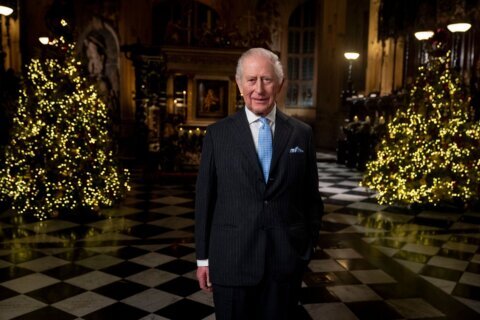While some millennials are content to play “Money Tree” on their iPhones, others play for keeps. With discipline, patience and knowledge of how the real-life game works, nearly any member of Generation Y can reach the seven-digit mark in a matter of decades.
Yet getting there through investment raises questions of its own. “When I get new clients who are under age 35, I ask them, ‘Do you know how old you will be when you become a millionaire?'” says Jerry Love, a certified public accountant and financial planner based in Abilene, Texas. “Most of them shake their head and tell me, ‘I don’t know if I can become a millionaire.’ Then we begin a conversation on the opportunities they have to make this a reality.”
So if you’re a young adult who’s ever dreamed of becoming a millionaire, it’s time to wake up and start down the path. Here are 10 ways millennials can fine-tune the prospects of reaching the million-dollar mark, with beer and pizza money to spare.
Ignite your 401(k) with a company match. A 2014 Aon Hewitt analysis of more than 3.5 million employees eligible for defined-contribution plans, such as 401(k)s, shows that nearly 40 percent of 20- to 29-year-olds and 31 percent of those 30 to 39 save at levels below the company match threshold. Rob Austin, director of retirement research at Aon Hewitt and based in Charlotte, North Carolina, provides an example. “Consider a 25-year-old worker who makes $30,000 annually and works for an employer that provides a typical company match: dollar-for-dollar up to 6 percent. If that 25-year-old starts saving the full match amount of 6 percent immediately upon employment, and continues to do so until she reaches age 65, she’ll have close to $1 million saved in her 401(k).”
Keeping that job means keeping that money. If you land a great job, especially one with a 401(k) match, keep in mind that those funds often come with a catch: You have to stay in the job for a given length of time (often several years) to keep all of the dough. “You don’t get to keep employer contributions to your 401(k) until you are vested in the plan,” says Joan Kuhl, a millennial career expert and founder of Why Millennials Matter, a consulting company that offers advice to employers about attracting and keeping millennial workers. “If you have control over when you leave the company and are close to becoming vested, I highly recommend staying with the firm for a few more months. This could mean the difference of thousands of dollars to your nest egg.” And of course, that money grows over time.
Never underestimate the power of compound interest. Starting a retirement account with steady contributions at age 20 versus 30 makes all the difference in the world. “Albert Einstein once called compound interest ‘the most powerful force in the universe,’ and he was a pretty smart guy,” says John McFarland, coordinator of the financial planning track at the Virginia Commonwealth University School of Business in Richmond, Virginia. Let’s say a 20-year-old begins plunking down $45 a month with a 50 percent company match. “If you raise the contribution by the same amount as any pay raises you receive, you’ll have more than $1 million by the time you are ready to retire,” he says. That assumes 3.5 percent annual pay increases and an 8.5 percent return on 401(k) investments.
Keep on your toes by staying balanced. Love recommends young adults stay away from a high-rolling stratagem, and find one with a smooth equilibrium. “Become educated about your investment options, and select a balanced approach,” he says. “But by all means, do not let your contributions sit idle in the cash-balance portion of the fund. Also consider which investment options may allow you to minimize the fees. Lower fees can give you a better overall rate of growth.”
Balancing act, part two: saving versus paying down debt. Young adults don’t live in a financial vacuum, whether that involves buying a first home, raising kids or struggling to land a decent job. That said, “You wouldn’t want to miss out on potential contributions to your company retirement plan by putting all your dollars toward paying off your debt,” says Vanessa Levan, vice president and financial advisor for Busey Investment Services in Champaign, Illinois. “Using the ‘snowball effect’ can help: Ensure a plan for each dollar, and as you reach different goals, be prepared to reallocate funds to another goal.”
Learn how the 401(k) informs the broader picture. The 401(k) is just one piece of the retirement picture, so it pays to learn how it fits in overall. “There should be other components, such as individual savings, equity in real estate and a Social Security account,” says E. Tylor Claggett Jr., professor of finance at Salisbury University’s Franklin P. Perdue School of Business in Salisbury, Maryland. “If an individual has a diversified portfolio of retirement plan components, he or she can take a more risky position with respect to his or her 401(k) or 403(b) plan.”
Don’t become a tweak freak. Michaela Pagel, an assistant professor of finance and economics at Columbia Business School, cites recent research that reached a surprising conclusion. “I found that people should not check their portfolios too frequently,” she says. “People get unnecessarily upset about day-to-day swings in the market that cancel out over time but induce investment decisions that often leave them worse off over time.” She sums this up by noting that, just as absence makes the heart grow fonder, it also makes your portfolio grow larger.
Stock your 401(k) with stocks. This plan of attack stems from the 8 to 12 percent stocks can potentially return each year. “But it’s important to remember to not just own your company’s stock. That maximum should be 10 percent of your total account,” says Amy Merrill, principal with TrueWealth Management in Atlanta. “Hold U.S. stock funds, international stock funds, real estate stock funds. Look at your fund choices and try to find a fund that is more like a stock index for the category.”
Learn how your parents did it. Millennials shouldn’t depend too much on financial advice from their parents, but getting a parental perspective on retirement is helpful. “Knowing what kind of help to ask for from parents is an important lesson that can set up young investors for long-term success,” notes Frank McAleer, director of retirement solutions at Raymond James Financial in St. Petersburg, Florida. “Parents who provide grown children with ongoing financial support, whether in the form of information or money, may also consider how they can empower their kids to start thinking about saving for the long term and for retirement.”
Shoot above the million mark. A cool million is a chill number with six big, fat zeros, but is it fat enough to retire on? McFarland talks about a class exercise where his students project their finances 50 years in the future, only to discover it would take more than $200,000 annually to support a middle-class lifestyle. “Your million bucks wouldn’t go far at that burn rate,” he says. By contrast, the 20-year-old who saves $165 a month in McFarland’s above example would accrue close to $4 million by retirement. “I think you’ll be much happier as a multimillionaire, so go out, get a good job and find $165 a month to trade for 4 million bucks,” he says.
More from U.S. News
How One Recent College Grad Intends to Retire at 40
7 Ways to Take Advantage of Your 401(k)
Millennials: How to Become a 401(k) Millionaire originally appeared on usnews.com







